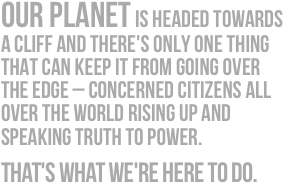-by Juan C. Soriano
At the beginning of the conference I wrote about countries coming to Cancun with low expectations but hoping to agree to a balanced outcome – in other words a balanced package of decisions involving mitigation, finance, accountability (Measurable, Reportable, and Verifiable or MRVs in UN lingo), and the legal form of the outcome.
The negotiations are in their final stages here in Cancun. COP president Patricia Espinoza has less than 24 hours to meet the deadline she posed to the plenary a couple of days ago. She told parties she expects an almost finalized document by tomorrow Friday at 9am and the parties to finalize its work that day by 6pm.
This is an overwhelming task when key elements in the negotiations have not made much progress since yesterday. An agreement on protecting natural forests is also stalled. In this blog, I want to outline the most positive and realistic scenario that could still come from these negotiations.
Mitigation: Countries agree to avoid warming beyond 1.5 degrees C and to stabilize greenhouse gas concentrations at 350ppm.
Finance: Countries establish a climate change fund under the Convention with an executive board that ensures equitable representation among countries and gender balance. The World Bank is out of the question.
Accountability: An agreement by parties which honors the principle of common but differentiated responsibilities. This agreement should also build on the modalities for measuring, reporting, and verifying mitigations actions already in the Convention and the Kyoto Protocol.
Legal Form: Parties agreeing to a second commitment period under the Kyoto Protocol and a mandate to finalize a second legally binding instrument under the convention by COP17.
In my view, any outcome that falls short of this is not meeting the already low expectations for the negotiations.


